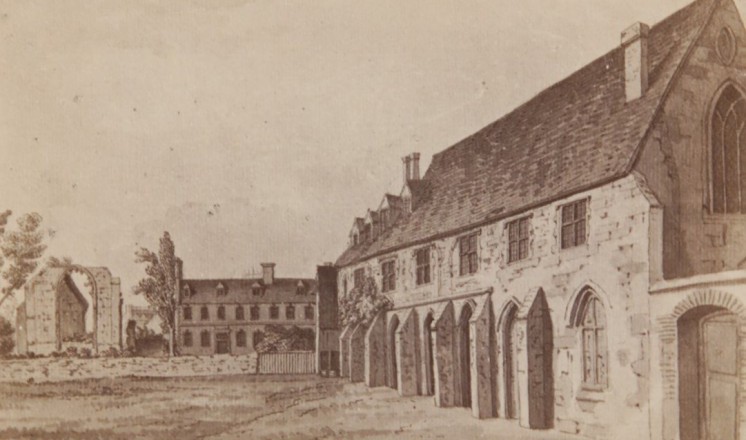History of the Museum
The museum was renamed in April 2023 as Lincoln Museum and Usher Gallery. The name ‘The Collection’ was in existence from 2005, when the museum merged with the Usher Gallery and moved to its current home on Danes Terrace. Before then, the museum was known as ‘The City and County Museum’.
The City and County Museum was founded in 1906, at a time when many towns and cities were beginning to recognise the importance of having a local museum as a focal point for both preserving local heritage and as an educational centre for the population. After deciding to create a museum, the city of Lincoln had to employ a curator to build up the museum collections. The man they chose was named Arthur Smith.
Arthur Smith was born in Leicester in 1869, but his family had moved to Grimsby when he was a young boy. He worked in the boot and shoe trade, as his father had done, but his interest was in natural history and he would later be accepted into the Fellowships of the Linnean Society and the Royal Entomological Society. In 1896 he became a founder and Honorary Secretary of the Grimsby and District Naturalist Society, and shortly afterwards was made the curator of their small museum.
After being offered the role of curator of the new Lincoln museum he moved to the city with his wife Laura and their two young sons. He maintained his interest in natural history and joined the Lincolnshire Naturalists' Union, acting as their Honorary Secretary up until his retirement in 1935, in which year he was also elected President of the Society.
Arthur Smith’s role in building up the museum’s collections cannot be overstated. In 1906 he brought together over 12,000 objects from existing collections, private donations and recent discoveries to form the nucleus of the museum collection. The early museum contained everything from natural history specimens and archaeological artefacts to ethnography and decorative art. The main focus of Arthur Smith’s collecting, in contrast to many other museums at the time, was on objects with local connections. Important early collections were transferred into the museum’s care, such as the material owned by Lincoln Cathedral and the Lincoln Mechanics' Institute. Many objects had been discovered a century or more earlier and this was the first time they were being gathered together under public ownership.
The City and County Museum first opened to the public on the 22nd May 1907, in the Greyfriars building on Broadgate. This beautiful 13th century Franciscan church was to remain the museum’s home for almost the next hundred years, having formerly been used as a private house in the Tudor period, a school and the home of the Lincoln Mechanics' Institute following the dissolution of the Friary in 1539.
The collections continued to expand under Arthur Smith’s curatorship and he developed his interest in local archaeology, publishing a very popular series of local newspaper articles in the 1920s and 1930s, which were later turned into booklets, sold in the museum shop. You can download some of these booklets on our resources page.
Upon Arthur Smith’s retirement in 1935, the curatorship was handed over to Tom Baker, who would go on to be a huge figure in Lincolnshire heritage and archaeology. Tom Baker had joined the museum as Arthur Smith’s assistant in 1927 at the age of just 15.
The museum continued to grow both in terms of the size of the collections and popularity, and in 1974 the local government reorganisation saw the museum officially recognised as the county archaeological museum as by this time the primary focus of collecting was on local archaeology. Collections such as decorative art, clocks and social history began to be passed over to other institutions such as the Usher Gallery and the Museum of Lincolnshire Life, where they could be cared for and displayed alongside other similar collections.
By the time the museum had a chance to move to a new, purpose-built home in 2005 and take on a new name – The Collection: Art and Archaeology in Lincolnshire – the collections numbered over 2 million objects, encompassing local archaeology, geology, natural history, numismatics, foreign archaeology, arms and armour, palaeontology and world cultures.



